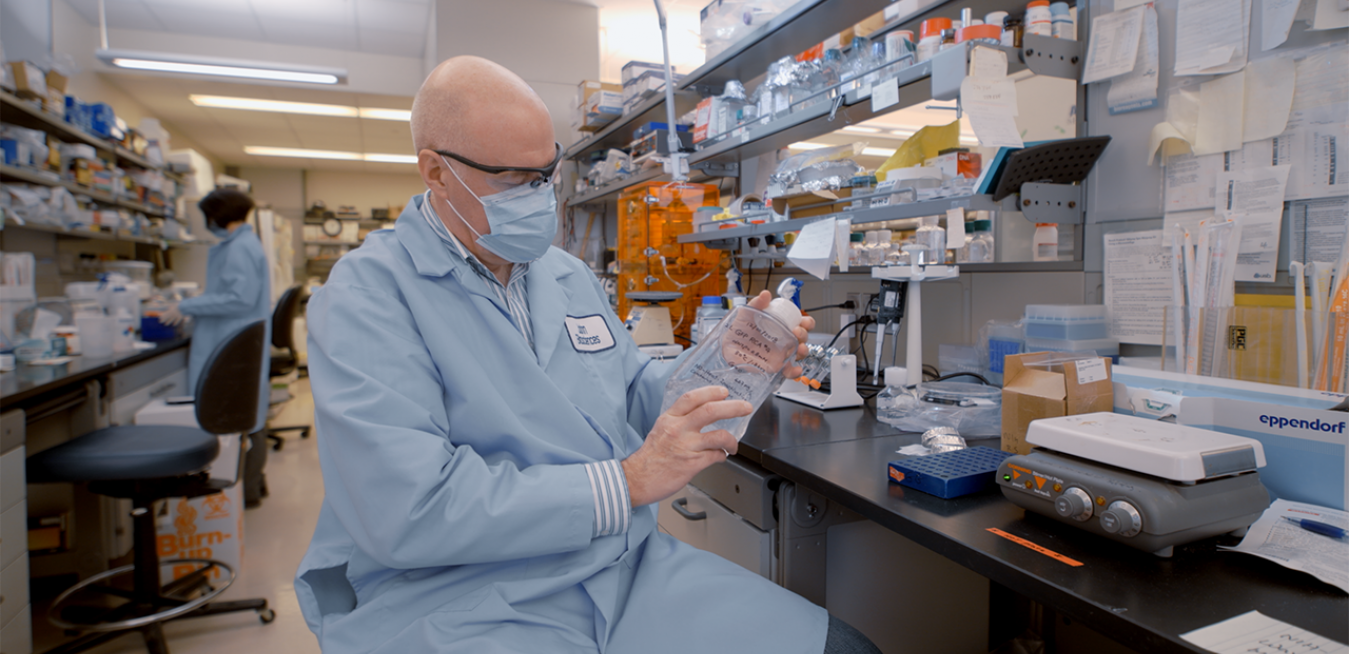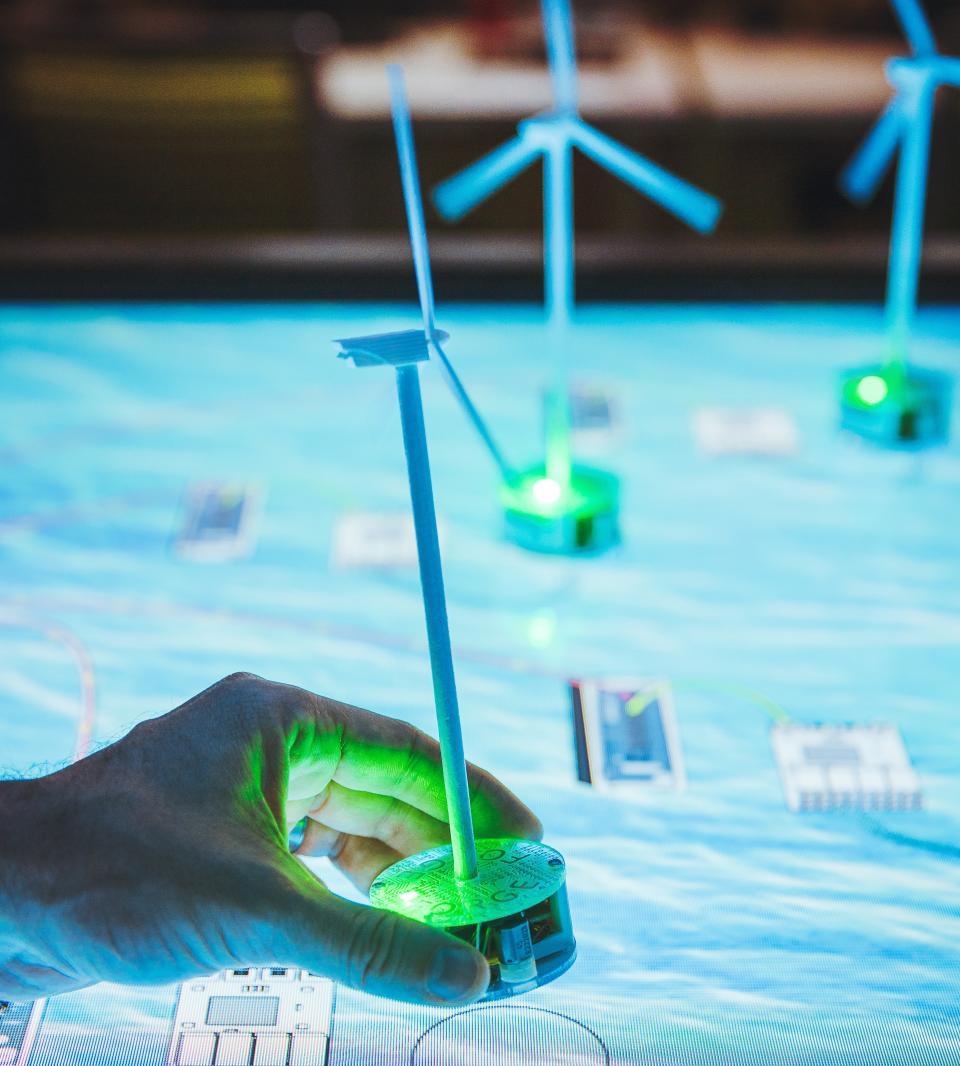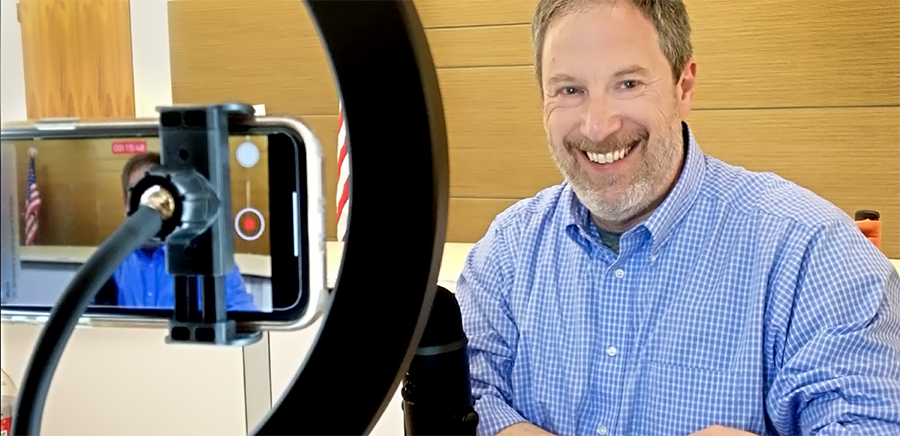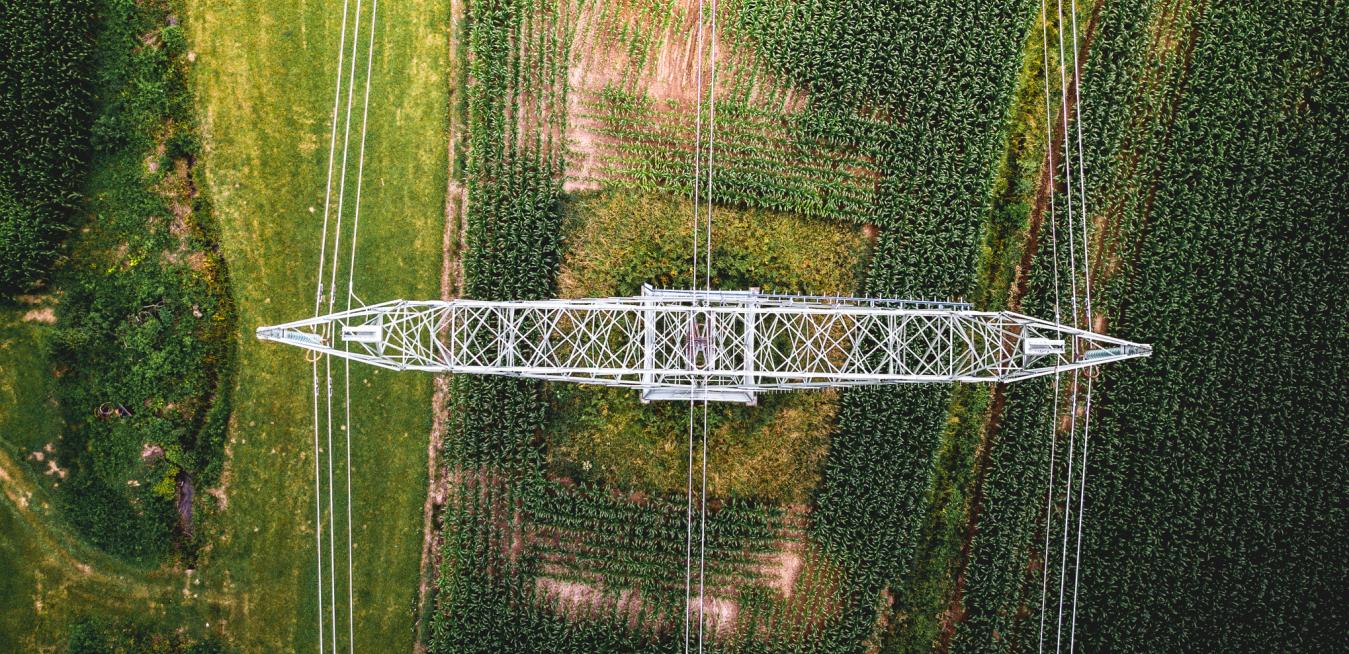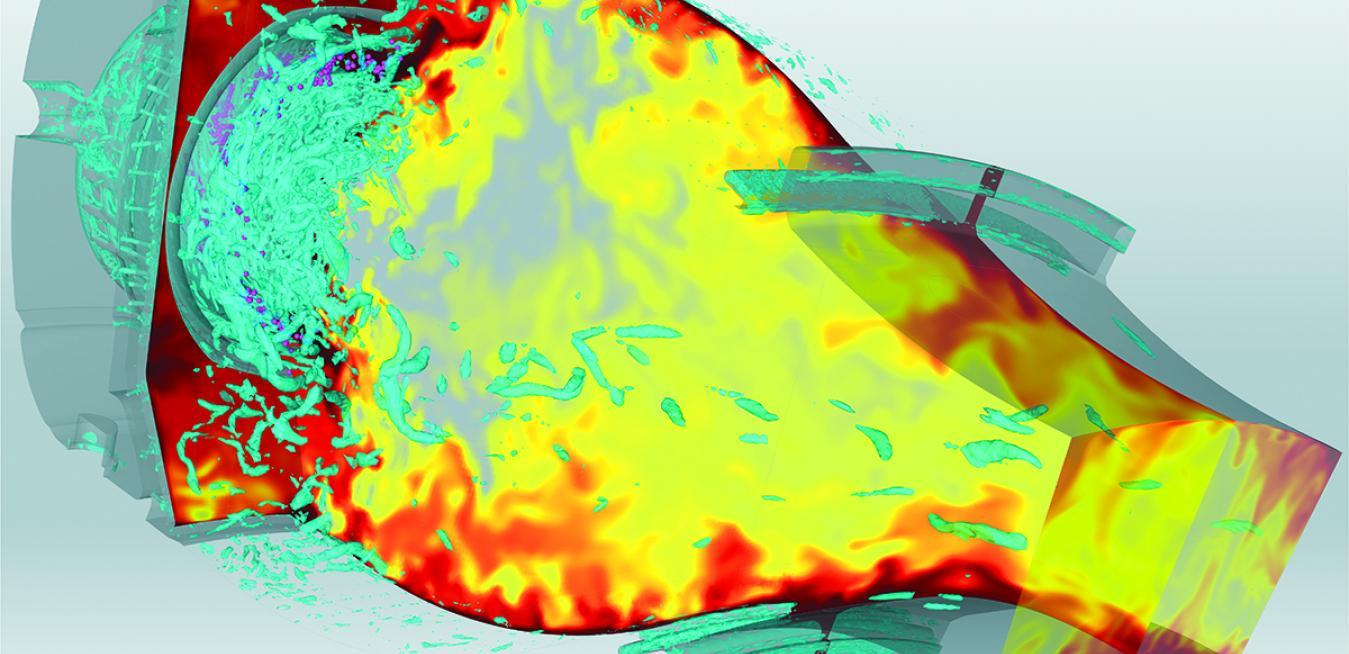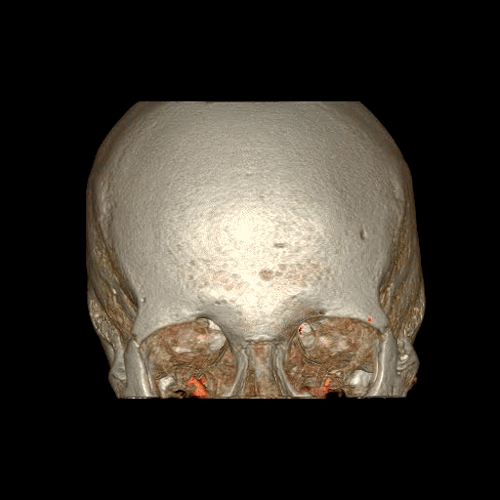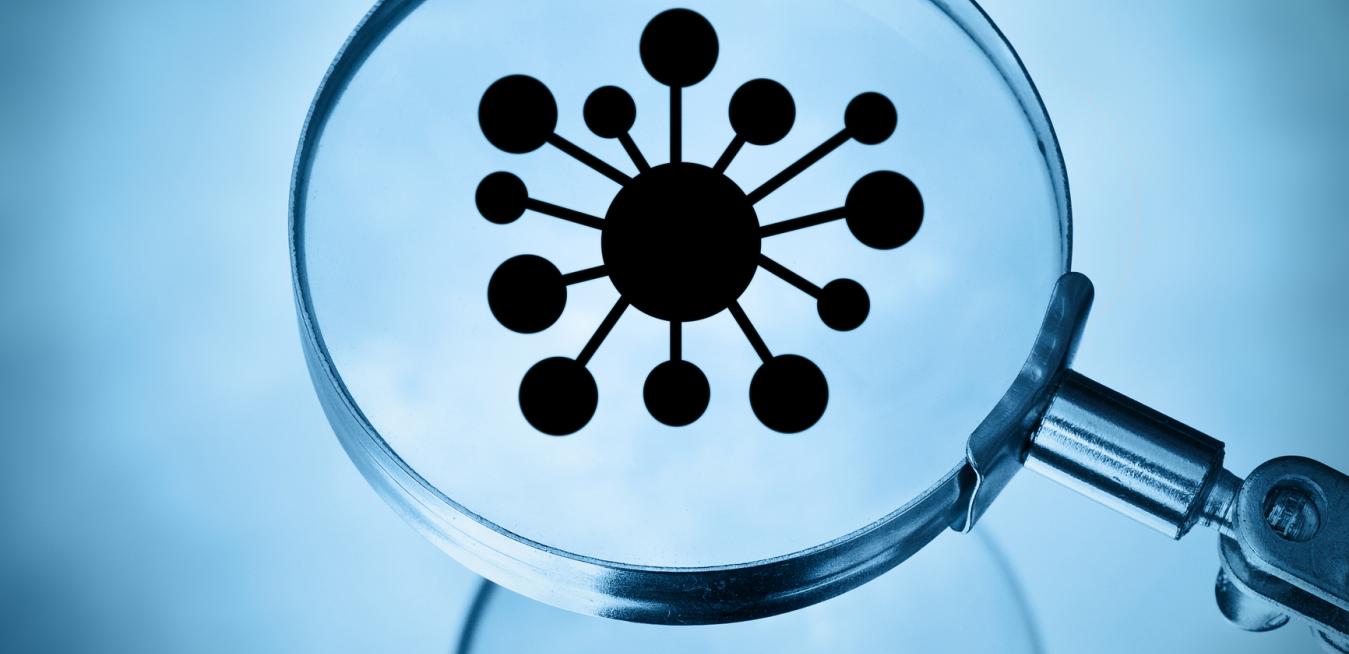The scene of an emergency can be rife with uncertainty, and the last thing first responders need to worry about is whether it’s safe to be there. That’s why scientists at GE Research have started working on a small detector designed to sniff out dangerous chemicals and sound a warning.
Standing in a lab on the GE Research campus in Niskayuna, New York, John Nelson holds up a sample of synthetic DNA inside a vial that is small enough to fit comfortably between his thumb and forefinger. Nelson, who has worked as a senior principal scientist at GE Research for the last 24 years, says there’s enough synthetic DNA inside that half-gram vile to produce an estimated 5,000 vaccines. “It took us under a day to produce this,” he says.
Building new wind farms is a powerful way of getting more renewable energy to homes and businesses. But what if you could squeeze more electricity from wind turbines already spinning in the fields? For that, you need more information. “The name of the game with wind turbines is all about efficiency,” says Eric Tucker, senior director of technical products at GE Research. “The more wind they’re capturing, the more energy they can create.”
Jeff Goldmeer was just a kid when he first became enchanted with the wonders of flames. “In the winter, in New York, my dad would build a fire and I would just sit and be completely fascinated,” he says. “Later, as an undergrad, when I learned that combustion was a thing and that you could study it, it really set me down the path I’m on today.”
High-voltage electrical substations — those ubiquitous installations that adjust voltage up or down so that electrical power can travel over long distances and be used in homes and businesses — have for a half-century relied on a highly effective insulator and arc extinguisher that helps keep the size of their substations manageable. Trouble is that the insulator, a gas called sulfur hexafluoride (SF6), is also among the world’s most potent greenhouse gases, and it can linger in the atmosphere for millennia. So, what are electrical utilities to do?
In the five decades since the first Earth Day, the world has made much progress in understanding the perils posed by climate change and finding the solutions we need. But we are far from done. The switch to electric cars alone will force us to reimagine not only how we make electricity, but also how we distribute it.
Renewables are clearly a big part of the future of energy, but so are natural gas, energy storage, hydropower and the digital grid. Other industries, like aviation, must also decarbonize to help prevent the planet from warming.
Thomas Edison’s light bulb patent was 15 years old when Wilhelm Roentgen discovered X-rays and proved their power by imaging the bones inside his wife's hand. “I've seen my death,” she reportedly said after seeing the picture. But engineer and polymath Elihu Thomson, who together with Edison and J.P. Morgan co-founded GE in 1892, had longevity in mind. A year after Roentgen’s discovery, he modified Edison’s light bulb design and made it emit X-rays.
One of the most daunting aspects of the COVID-19 pandemic involves tracking the spread of the microscopic, airborne coronavirus causing the disease. But what if you could spot its presence via your smartphone?
Growing up in Hyderabad, a large, bustling city in south-central India that has become an information technology hub, Kavitha Andoji was constantly dreaming up inventions that would save her family time and money. In one case, they rigged a stationary bicycle to use the energy from pedaling to power the lights in their home. Another handy device was a machine that would repeatedly hammer a pomegranate to expel its seeds without wasting the juice. “They were mainly my ideas,” she says, “but we used to collaborate to implement them.”
When a Boeing 787 Dreamliner operated by Air Tahiti Nui took off from the Faa’a International Airport on the Pacific Island of Tahiti last May, the pilots weren’t planning on setting world records; they were flying home French nationals who got stranded there due to international travel bans caused by COVID-19.






